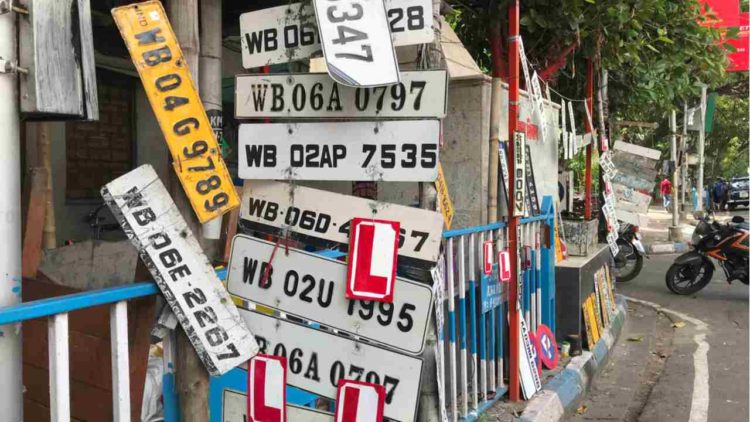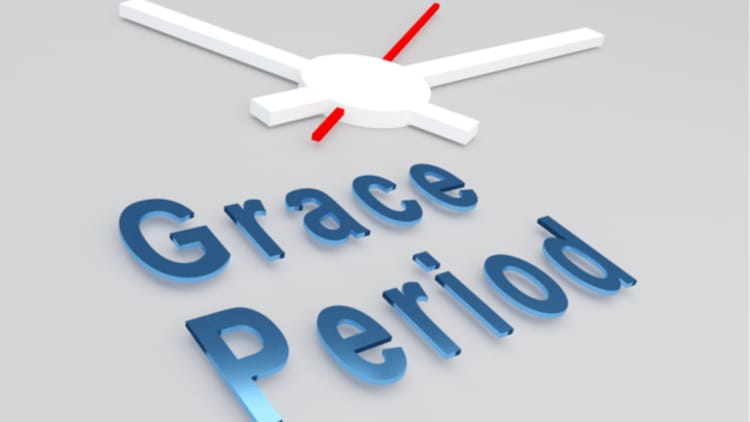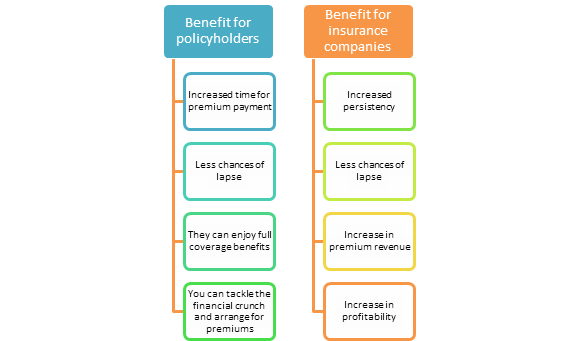Registration is a process of registering the vehicle in some specific person’s name. This is done at the time of purchase of the vehicle. Without a valid vehicle registration, it is illegal to ply the same in India. Once a vehicle is registered, you can officially drive the same anywhere within the geographical boundaries of India.
Registering a motor vehicle in one’s name was quite a tedious process but that seems like a distant past now. The Government of India has launched its official website named “Vahan” as a part of the ‘Digital India’ drive. Now the entire procedure has become simple. Thus, it has become quite easy for you to follow the process without any hassle.
What is Vehicle Registration?
Vehicle Registration is a process whereby you get your car number plate and it is registered under the list and records of the Government. The main motto of registration is to have a linkage between you as the owner and your vehicle through a distinct identification number and therefore shows a car registration number plate. It is of extreme importance to register your vehicle so that the Government can curb any illegal activities in India. One of the main important reasons for registration of the vehicle is to get valid insurance coverage, without which is not possible.
According to the Motor Vehicle Act, 1988, section 39A, a vehicle is permissible to be driven in public roads only after registration by the respective transport authority for registration. Hence, the registration certificate is a certified legal document which acts as a proof that your vehicle is recorded and verified in Government records. In India, registration within 7 days from the delivery date of the vehicle is compulsory.
What is Re-Registration of the Vehicle?
There are 2 situations under which a vehicle needs to be “RE”-registered, i.e. registered again. Those situations are:
- Situation 1:
It is compulsory for all private vehicles to do the re-registration of the vehicle after 15 years from the date of the initial registration as per the Central Motor Vehicles Act. After this, the registration is renewable at a gap of 5 years till the RTO declares the vehicle to be safe and fit for driving on the roads in India - Situation 2:
It is necessary for you to re-register your vehicle if you move from one state to another with your vehicle.
The law says: If a motor vehicle, when registered in one particular state, is present in another state for any valid reason, for more than twelve months’ time, you would have to transfer your vehicle to the new state and RE-register the same. So, if you simply visit another state for a tenure of 12 months or less, then there is no need to re-register your vehicle.However, if your period of stay exceeds 12 months, then you need to apply for a Transfer and Re-Registration. The process of Transfer of Vehicle is:
- As the registered owner of the vehicle will have to put an application to the same RTO where the vehicle was registered
- Then you need to fill in the documents and submit them to the authority of the new RTO in the respective jurisdiction for the assignment or re-registration of the vehicle
- There is a timeframe of 1 year for this entire process to be completed, as mandated by the Central Government.
The procedure involved in Re-registration of vehicle
Steps for re-registering of the vehicle under certain scenarios:
- Situation 1:
In order to re-register your vehicle after a tenure of 15 years of initial registration, you will have to put forward an application form. Your vehicle has to be presented before the RTO for scrutiny and the essential fee has to be paid to the RTO. After the vehicle is scrutinised and verified with all other documents, the RTO will be in a position to issue a fresh Registration Certificate or an RC. For car registration renewal, the below-mentioned documents need to be submitted to the RTO: - Properly filled Form Number 25 which is the application of renewal of registration
- Registration Certificate in original
- A valid Pollution Under Control Certificate or the PUC
- Insurance Certificate of the Vehicle
- Situation 2:
In order to transfer your registration from one state to the other, there are two vital aspects which you should be careful about which are: - Vehicle Hypothecation Position:
If the vehicle had been taken under finance and it has the hypothecation done by the financer in the Registration Certificate. In this case, you need to get the No Objection Certificate or the NOC from the respective financer beforehand, so that you can register your vehicle in the other required state without any hassles - Compulsory Road Tax:
On transferring the vehicle from one state to another,you may have to pay the road tax of the new state at a depreciated price of the vehicle. If you need to apply for a refund of the Road Tax from the state you are moving for the remaining tenure of the tax validity, you need to apply for the same at the time of obtaining the NOC.
Road Tax is levied by the State and the Central Government, and hence each state has its own specifics and basis of road tax calculation which you need to pay accordingly.
Steps for car registration renewal
Let us now see the 3 broad steps of car registration renewal in details for a better understanding:
- Step 1: The first step for you is to get the No Objection Certificate or NOC.
Some important points for you to note for obtaining a NOC are: - Notary attested self-declaration affidavit has to be furnished by you on an INR 10 stamp paper stating that all relevant documents for the vehicle are original with no outstanding dues for the vehicle
- A No Objection Certificate should be attained from National Crime Record Bureau or NCRB affirming that its not a stolen vehicle
- A No Objection Certificate from the financer in Form Number 35 if the vehicle had been taken on loan and the same hasn’t been repaid yet
- You need to provide 3 properly filled copies of:
- Form No 27, i.e. the application for the assignment of new registration,
- Form number 28, i.e. the application and
- The grant of No Objection Certificate together with
- NOCs from the Traffic Police,
- NCRB as well as
- The financer to obtain the NOC from the respective RTO
- Other vehicle documents like the PUC Certificate, copy of Smart Card, copy of Chassis imprint, proof of identity and proof of address have to be submitted.
- Step 2:
There are a specific set of documents needed for car registration renewalin other state mentioned as below which you need to submit: - Documents that need to be shown in the original include Smart Card, Insurance Document, Pollution Under Control or PUC Certificate
- The Original Invoice so that the RTO can compute the road tax basis the depreciation of the vehicle
- Step 3: Re-registration of vehicleand Road Tax payment
After the above step, you can apply for Re-registration of the vehicleand pay the appropriate road tax with a certain set of documents for the vehicle, your personal documents, NOCs etc. The following documents are to be submitted by you at the RTO
- Re-registration of the vehiclecan be made in Form Number 20, the application for registration for your vehicle and Form number 33, the application of intimation for address change
- If you have a used vehicle, you must submit the relevant documents for the transfer of title or ownership
- After the vehicle is being registered, you can apply for a refund of tax as appropriate
The RTO then will issue an interstate automobile transfer NOC within a timeline of 2-3 weeks.
List of documents needed for re-registration of a Vehicle
Here is the exhaustive list of documents that are needed for re-registration of a Vehicle:
- Application Form in Form Number 27 as mentioned above
- Registration Certificate
- No Objection Certificate as mentioned above
- Residence Proof
- Certificate of Insurance
- PUC
- Form Number 28 as mentioned above
- Form Number 20 as mentioned above
- In the case of commercial vehicles, Challan clearance from the department of traffic police
- Certificate of Fitness
- PAN Card or Form 60 as applicable
- Fee for parking
- Certificate manufactured about emission standards
- Sketch imprint of the Chassis and the Engine
- Your Date of Birth proof
- Proof for the address of the seller
- Sign identification of the seller
Fees re-registration of a Vehicle
There is a charge for re-registration of the vehicle which must be paid before the process is completed. Here is a list of the required fees that need to be paid for re-registration of a Vehicle:
Vehicle Type | Amount (INR) |
Two Wheelers | 300 |
Light Motor Vehicle for Non-Transport | 600 |
Light Motor Vehicle for Transport | 1000 |
Vehicles carrying medium goods | 1000 |
Vehicles carrying medium passengers | 1000 |
Motor Cycle which is Imported | 2500 |
Vehicles carrying heavy passengers | 1500 |
Motor vehicles which are Imported | 5000 |
Vehicles carrying heavy goods | 1500 |
Other vehicles not included in the above list | 3000 |
Points to keep in mind while applying for a Re-registration of the vehicle:
The Registration Certificate can be renewed easily and you need to keep in mind the following points:
- Within 60 days of the Registration Certificate expiry, the fresh application for the renewal of the Registration Certificate has to be made via Form number 25 to the particular authority in registration in the same area the vehicle is registered
- Payment has to be clear for all the taxes which are unpaid if there are any
- Payment has to be made as per in the CMVR Act of 1989
The car registration renewalof a private vehicle is effective for a period of 5 years. You are allowed to renew them every 5 years as mentioned above.
Re-registration is a legal and easy process which can be quite hassle-free if you get the documents beforehand. All you need to do is to follow the process, get the right documents and get the vehicle re-registered.
FAQs
- Is re-registration and reassignment of registration certificate same?
Yes, re-registration and reassignment of registration certificate are the same and the same applies when you are moving from one state to the other.
- Is Transfer of ownership related to re-registration?
No, transfer of ownership and re-registration are different. Transfer of ownership happens under the following 3 scenarios:
- Transfer of ownership when you are selling your vehicle to another buyer
As soon as the vehicle is sold off, the name of the buyer is recorded as the registered owner of the vehicle instead of the earlier registered owner and this process is called as the transfer of ownership.
- Transfer of ownership upon the death of the owner of the vehicle
As soon as the registered owner of a vehicle dies, transfer of ownership is effective in the name of the legal heirs of the expired registered owner and the usage of the vehicle can be for a period of 90 days within 30 days from the date of death of the owner.
- Transfer of ownership in auction
When a vehicle is sold in public auction, the name of the buyer is recorded as a registered owner instead of the earlier registered owner and once again this is the process called and named as the transfer of ownership.
- Transfer of ownership when you are selling your vehicle to another buyer
- Is No Objection Certificate mandatory in case of re-registration?
Yes, it is compulsory to get the No Objection Certificate and is a crucial step in the process of re-registration of your vehicle.
- What documents are needed for address change in the registration certificate?
You can change the address in the RC book once you are shifted to a different state. As an owner of the vehicle to register a new address in case of any change in the address, you need to apply for the same with a certain document which is as follows:
- Form number 33 application form for address change in the RC book
- RC book
- Your new address proof
- Pollution Under Control Certificate
- Certificate of Insurance
- No objection certificates
- Fee for the Smart card fee or the registration certificate
- Your attested PAN card copies or form 60 as appropriate
- Sketch imprint of the Chassis and the Engine
- Your signature proof as an owner
- What documents are accepted as proof of residence?
Any one of the following documents is accepted as proof of residence.
- Ration card
- Passport
- Voters’ Id
- Aadhar Card
- Life insurance policy
- Utility bills like telephone bill, electricity, gas bill
- State or Central Government issued payslip
- House Sale or Rent Agreement



















